Tackle weeds head-on to make room for your prized plants, remember to try and remove them before they set seed
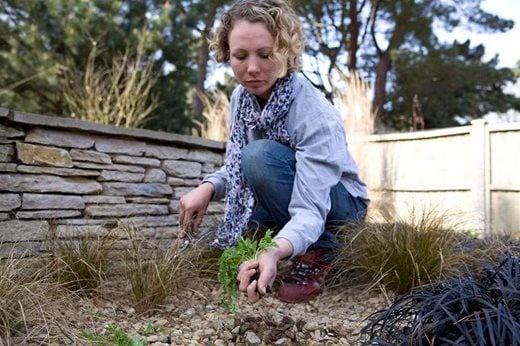 Don't be put off if weeds take over areas in the garden from time to time. Certain weeds will flourish depending on the weather and soil conditions and you can tackle these weeds in different ways based on how they grow.
Don't be put off if weeds take over areas in the garden from time to time. Certain weeds will flourish depending on the weather and soil conditions and you can tackle these weeds in different ways based on how they grow.
Annuals
Some are annuals, such as hairy bittercress and chickweed, and have a one-year lifecycle that ends with them setting seeds for the next generation.
Perennials
Others are perennials, like dandelions (having a lifecycle longer than one year). You may need to eradicate the main root of these or use a weedkiller.
Trees
Some trees can be weeds, too, if they start to grow in unwanted places. Hollies and horse chestnuts have tough roots that can be hard to dig out once they are established.
How to tackle which weeds and when
Annual weeds
Dislodge annual weeds by shallowly working the soil with a hoe. If you hoe too deeply it may bring up ungerminated seeds to the surface.
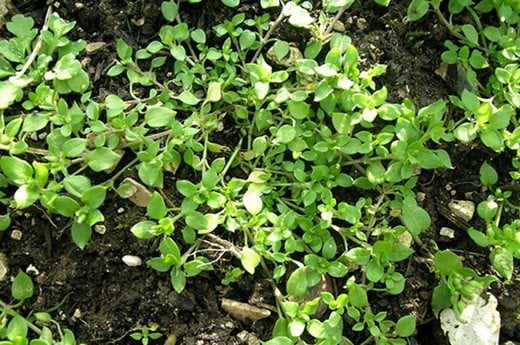
Chickweed
This weed thrives on rich soils, quickly smothering other seedlings and spoiling the appearance of borders. Remove it promptly using a hoe, or by hand, preferably before it flowers.
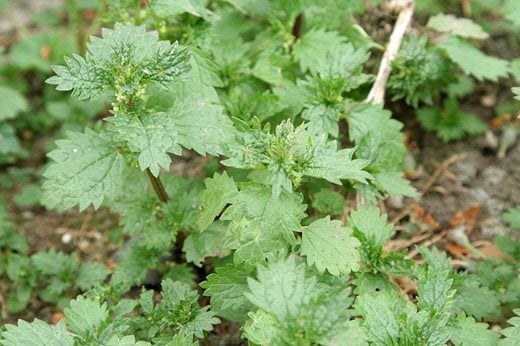
Annual nettle
Smaller than perennial stinging nettle, this weed grows quickly and sets seed from a young age. It favours rich, fertile soil such as well-manured vegetable gardens. It is commonest in spring and late summer. If you remove by hand, wear gloves to avoid stings.
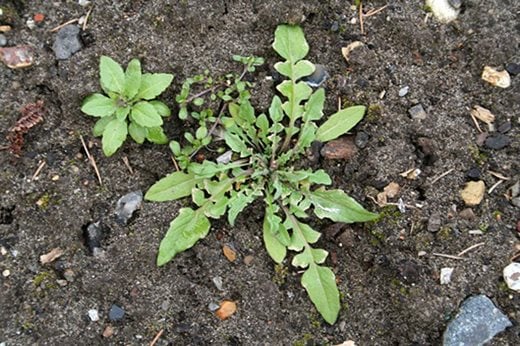
Shepherds purse
Rosettes of leaves grow all year round, sending up characteristic heart-shaped seed pods after white flowers. Buried seeds can still germinate after 30 years of lying dormant in the soil, so prevent a potential problem by removing plants and seedheads as soon as you spot them.
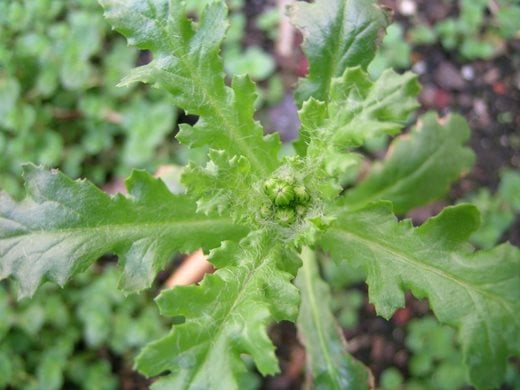
Groundsel
Produces seeds all year round. Although hoeing seedlings is effective, remove the larger uprooted plants as these can still set seeds that germinate. Seeds spread on the wind, but only last a few years in the soil.
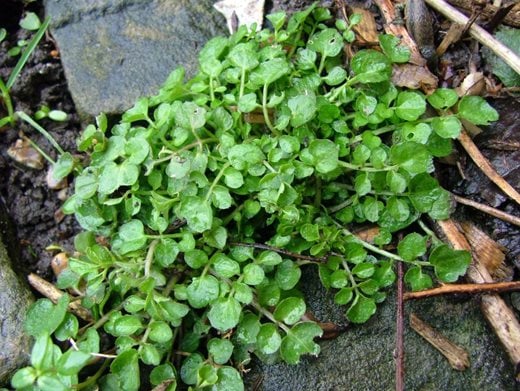
Hairy bittercress
Bittercress often forms on the top of container-plants but can be a real nuisance in borders. The short flower stems propel seeds up to a metre (39in) away, so the plant is best removed as soon as you spot it. Be careful when pulling up weeds that have gone to seed as propelling seeds can fly into your eyes.
Perennial weeds
Often these can be forked out, removing all the root, and burnt or put out with the rubbish. Using a weed suppressing mulch or membrane can also help. Weeds can also be treated with the systemic weedkiller glyphosate, which is applied to the foliage and absorbed into the plant's sap stream. The weedkiller goes all the way to the roots and kills all parts of the plant. It’s a slow-acting but effective method. Take advice on the weedkiller package on the best conditions to apply it. This will affect the speed of results. Consider covering other plants in the border with plastic bags to prevent weedkiller damage.
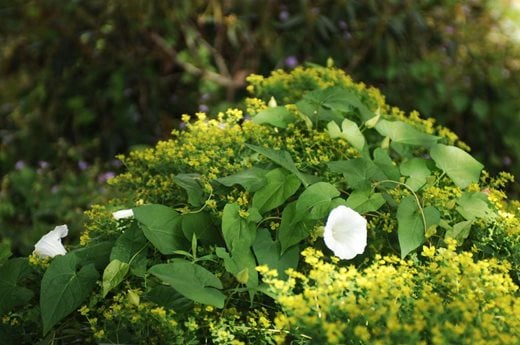
Hedge bindweed
Twining stems can swamp flowers and shrubs in borders. Apply a weedkiller such as glyphosate. You can stick a pole or bamboo nearby to a stem to encourage it to climb up and then apply the systemic weedkiller there without risk of it getting onto nearby specimen plants.
More details on bindweed
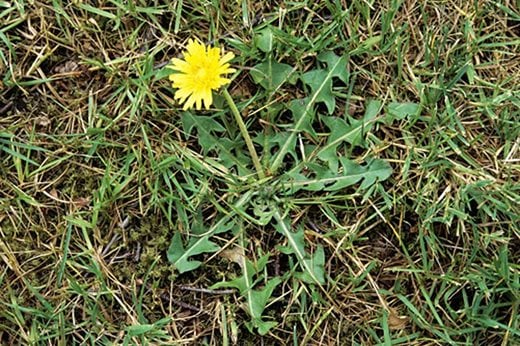 Dandelion
Dandelion
Their large yellow flowers and furry seed heads make them easily recognisable. They often invade lawns and can be difficult to get rid of in the border and in cracks in paving. Best to stop them taking root by providing specimen plants with a surrounding weed-suppressing mulch. Established weeds can be dug out by hand, ensure you get all of the long tap root, or you can spot treat with a glyphosate stick - you may need to do this more than once.
Woody perennial weeds
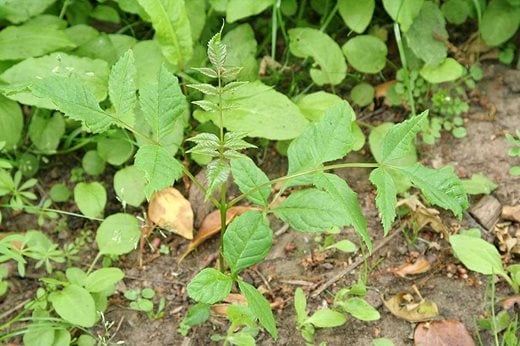 Trees and shrubs may pop up in your garden because a seed has been blown in by the wind or transferred by wildlife visitors to the garden. It is best to uproot these weeds as soon as you notice them and before they form an established root system, usually a long tap root.
Trees and shrubs may pop up in your garden because a seed has been blown in by the wind or transferred by wildlife visitors to the garden. It is best to uproot these weeds as soon as you notice them and before they form an established root system, usually a long tap root.
See more information on getting rid of woody weeds such as self-seeded trees popping up in the wrong place.
More information

